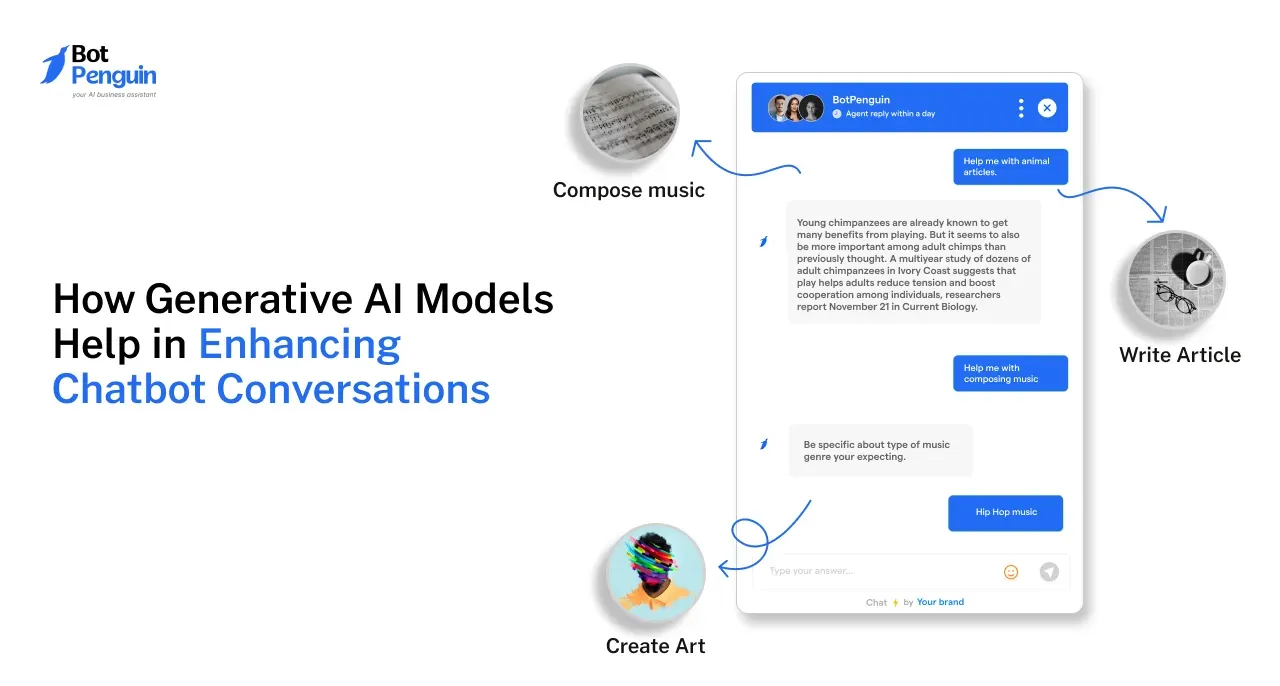Introduction
Social media marketing has become an integral part of business strategies worldwide. However, as companies invest significant resources into these platforms, the need to measure social media marketing ROI (Return on Investment) has become increasingly crucial. According to a recent report by Statista, global social media advertising spend is projected to reach $252 billion by 2026, highlighting the massive financial commitment businesses are making in this area.
Despite this substantial investment, many organizations struggle to accurately measure their social media marketing ROI. A survey conducted by Sprout Social revealed that 55% of marketers find it challenging to demonstrate the value of social media to their organization's leadership. This disconnect underscores the importance of developing robust methods to quantify the impact of social media efforts on business objectives.
Measuring social media marketing ROI goes beyond simply tracking likes and shares. It involves analyzing how social media activities contribute to lead generation, customer acquisition, and ultimately, revenue growth. By effectively measuring social media marketing ROI, businesses can optimize their strategies, allocate resources more efficiently, and demonstrate the tangible value of their social media efforts to stakeholders.
Continue reading to know more about the importance of measuring social media marketing ROI.
What is Social Media ROI?
Social Media Marketing ROI is a measure of the returns a business gets from its social media marketing activities. It’s calculated by comparing the revenue generated from social media campaigns to the costs involved. In simpler terms, it's the profit earned from social media marketing after subtracting the expenses. This metric helps determine whether the time, effort, and money spent on social media are paying off.
Why ROI Matters in Marketing
Understanding the ROI of social media marketing is vital for several reasons. It allows businesses to gauge the effectiveness of their social media strategies. Without measuring ROI, it's challenging to know if the campaigns are successful or need adjustment. This understanding helps in making informed decisions and justifying the marketing spend.
Benefits of Measuring ROI
Let's explore the benefits of measuring it.
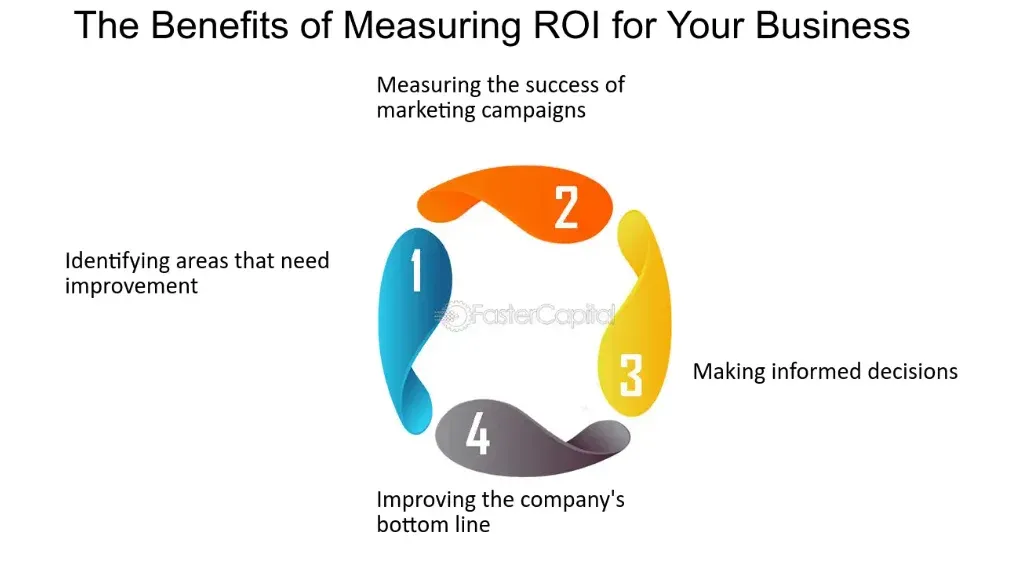
Improved Budgeting and Resource Allocation
When businesses know how to calculate ROI for social media marketing, they can allocate their budgets more efficiently. By identifying which campaigns deliver the best results, companies can invest more in successful strategies. This ensures optimal use of resources and maximizes returns.
Suggested Reading:How to Increase Engagement on Social Media Platforms
Better Understanding of Customer Behavior
Measuring Social Media Marketing ROI provides insights into customer behavior. It shows which content resonates with the audience and drives engagement. This understanding helps businesses tailor their content to meet customer preferences, enhancing overall marketing effectiveness.
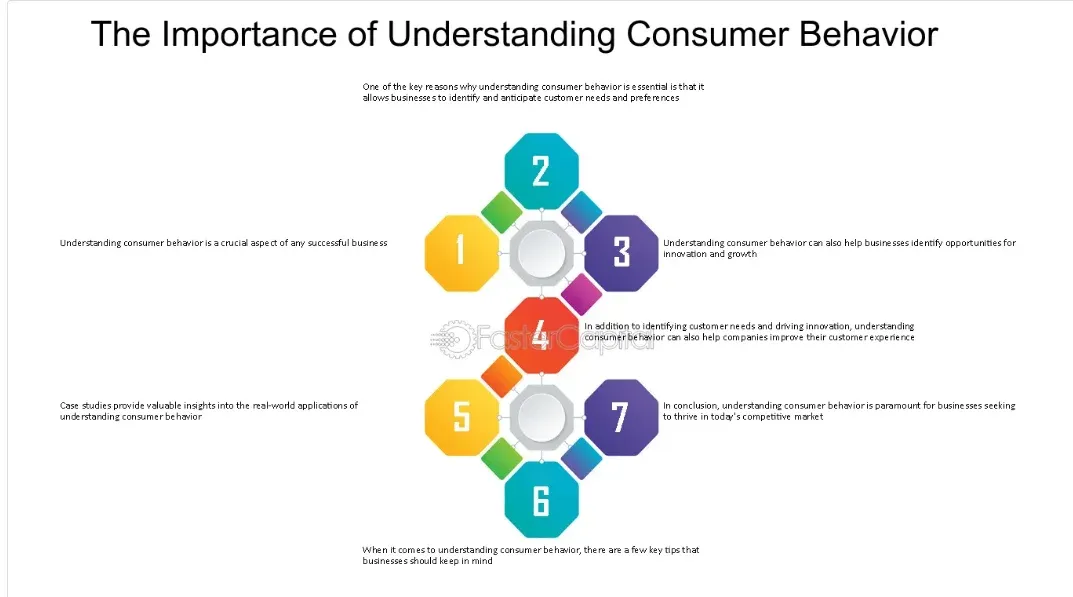
Enhanced Campaign Effectiveness
Tracking the ROI of social media marketing enables businesses to refine their campaigns. By analyzing what works and what doesn’t, marketers can tweak their strategies for better performance. This leads to more effective campaigns that achieve desired outcomes.
Accountability and Justification of Marketing Spend
One of the primary benefits of measuring Social Media Marketing ROI is the ability to justify marketing expenditures. It provides concrete data to demonstrate the value of social media efforts. This accountability helps secure future budgets and gain stakeholder support.
Key Metrics for Measuring ROI
Understanding the right metrics is essential for measuring Social Media Marketing ROI. These metrics provide insights into the effectiveness of your campaigns and help in optimizing your social media strategies.
Here are the key metrics you need to focus on:
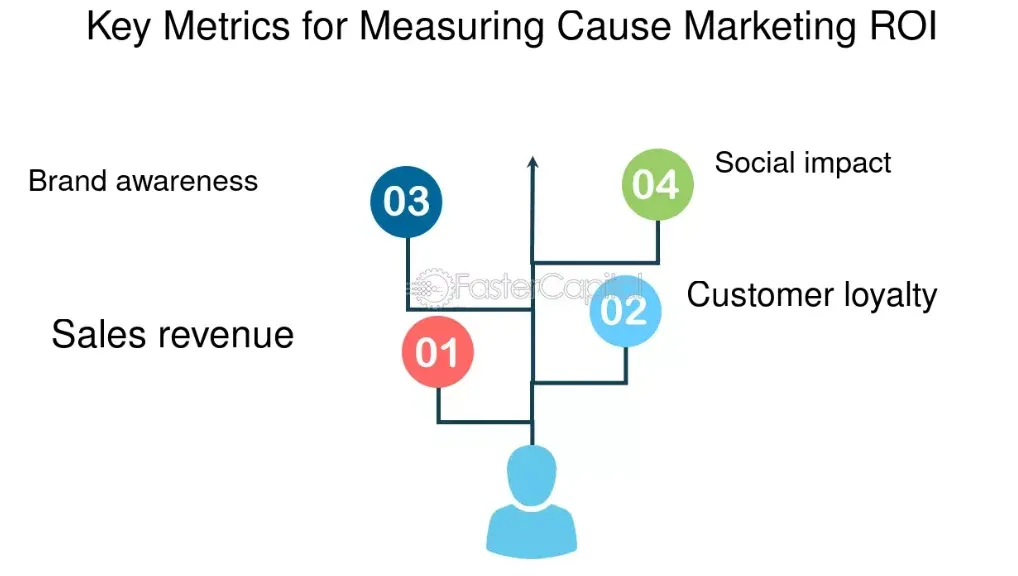
Engagement Metrics: Likes, Shares, Comments
Crucial for gauging how well your content resonates with your audience.
High engagement means your posts are interesting and relevant.
Tracking likes, shares, and comments reveals what type of content works best and fosters community interaction.
Reach Metrics: Impressions, Followers
Helps you understand the visibility of your content.
Impressions show how many times your content is displayed.
Followers indicate the size of your audience.
Important for assessing the potential impact of your social media presence.
Conversion Metrics: Clicks, Sales, Leads
- Directly tied to Social Media Marketing ROI.
- Measures the actions taken by users after engaging with your content.
- Clicks track user interest.
- Sales measure revenue generated.
- Leads represent potential customers.
- Helps understand how to calculate ROI for social media marketing effectively.
Customer Retention Metrics: Repeat Purchases, Loyalty
- Focuses on the long-term value of your social media efforts.
- Repeat purchases measure the frequency of returning customers.
- Loyalty indicators measure ongoing customer engagement.
- High retention rates suggest strong brand loyalty and successful engagement strategies.
Tools and Techniques for Measuring ROI
To accurately measure Social Media Marketing ROI, you need the right tools and techniques. These tools provide insights into various metrics, helping you understand the effectiveness of your social media campaigns. Here are some essential tools and techniques for measuring your ROI.
Google Analytics
Google Analytics is a powerful tool for tracking Social Media Marketing ROI.
- It provides detailed insights into traffic sources, user behavior, and conversion rates.
- By integrating Google Analytics with your social media platforms, you can monitor how social media efforts drive traffic and conversions.
- This tool helps answer the question, "can you measure the ROI of your social media marketing?" with concrete data.
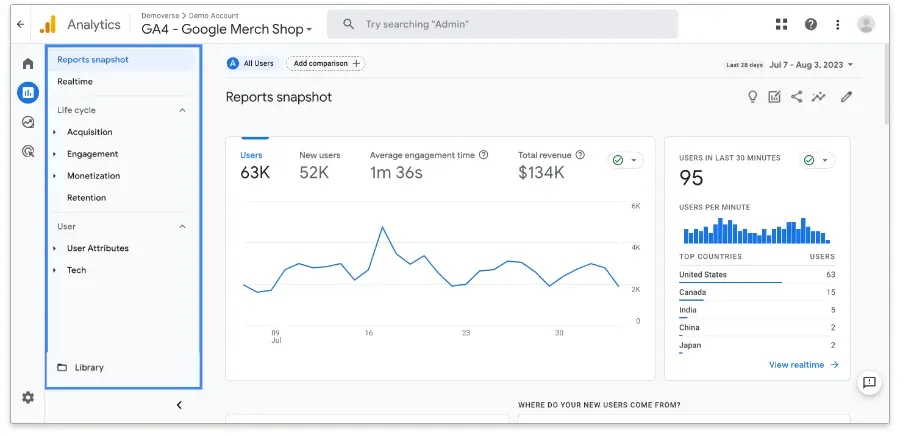
Social Media Insights
Social media insights are built-in analytics tools offered by platforms like Facebook and Twitter.
Examples include Facebook Insights and Twitter Analytics.
These tools provide data on engagement, reach, and audience demographics.
They help track post performance and understand effective content strategies, crucial for understanding the ROI of social media marketing.
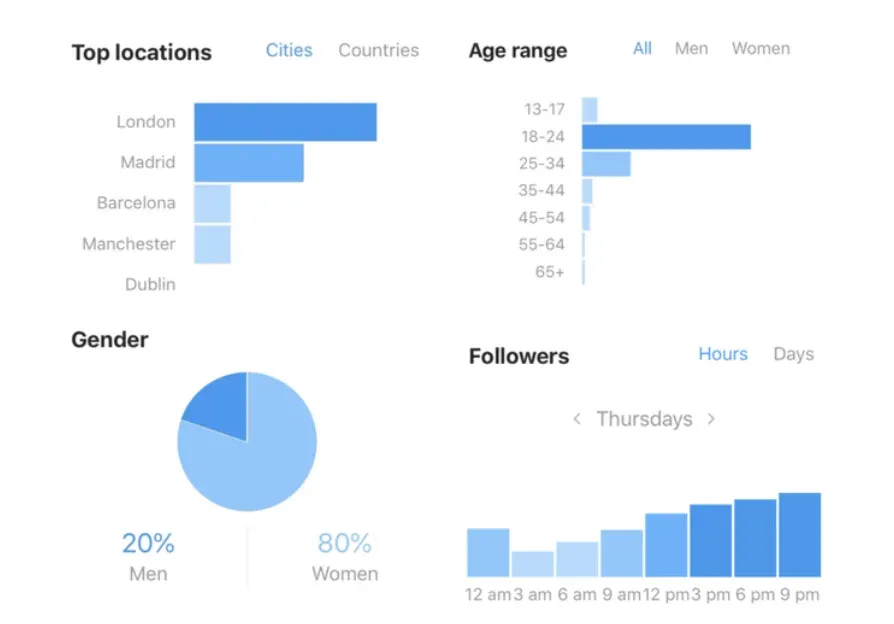
Third-Party Tools
Third-party tools like Hootsuite and Sprout Social offer comprehensive solutions for managing and measuring social media performance.
These tools aggregate data from multiple social media platforms, making it easier to track and analyze key metrics.
They provide customizable reports and dashboards, facilitating understanding of how to calculate ROI for social media marketing effectively.
Utilizing these tools ensures you can gauge the average ROI for social media marketing and optimize your strategies accordingly.
How to Calculate Social Media ROI
Calculating Social Media Marketing ROI is essential to understand the effectiveness of your social media efforts. Knowing how to calculate ROI for social media marketing helps in making informed decisions and optimizing your strategies. Here’s a concise guide on calculating your Social Media Marketing ROI.
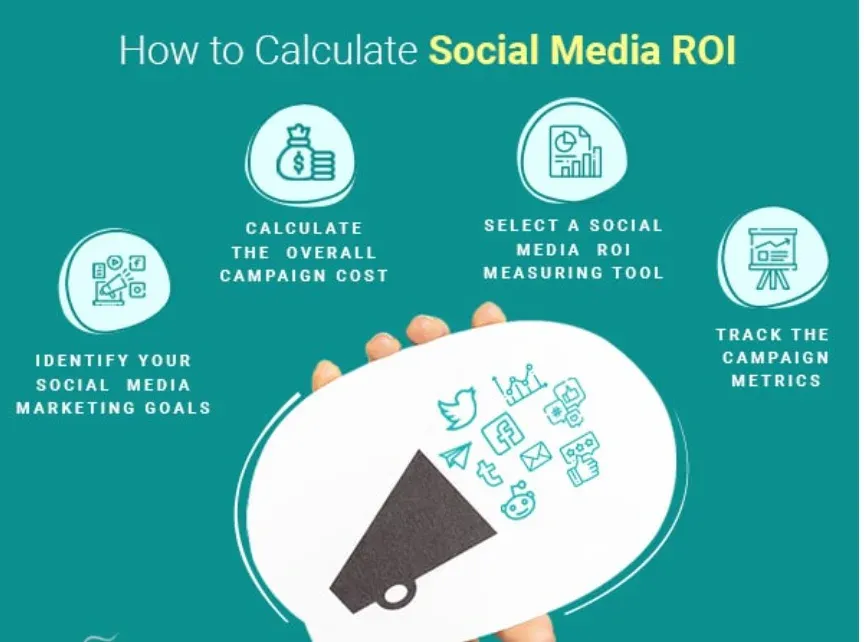
The basic formula for calculating ROI is:
ROI = (Net Profit / Cost of Investment) × 100
In social media, net profit is the revenue generated from social media activities minus the costs involved.
Example 1: If a campaign costs $500 and generates $1500 in sales, the ROI is:
ROI = ((1500 - 500) / 500) × 100 = 200%
Example 2: If you spend $200 on ads and gain $600 in revenue, the ROI is:
ROI = ((600 - 200) / 200) × 100 = 200%
Measures immediate financial returns such as sales from a social media campaign.
Includes long-term benefits like brand awareness, customer engagement, and loyalty.
Suppose you run a Facebook ad campaign costing $300. The campaign results in 10 sales, each worth $50.
Revenue: 10 sales × $50 = $500
Cost: $300
Net Profit: $500 - $300 = $200
ROI:
ROI = (200 / 300) × 100 = 66.67%
Steps to Measure Social Media ROI
Measuring Social Media Marketing ROI is crucial for understanding the effectiveness of your social media efforts. By following a few key steps, you can accurately track and evaluate your ROI.
Here's a clear and concise guide on the steps to measure your Social Media Marketing ROI.
Step 1: Define
Define what you want to achieve with your social media campaigns. Goals can include increasing brand awareness, driving website traffic, generating leads, or boosting sales. Clear goals help in focusing your efforts and measuring success effectively.
Step 2: Tracking Relevant Metrics
Identify the metrics that align with your goals. For engagement goals, track likes, shares, comments, and mentions. To reach goals, monitor impressions and follower growth. For conversion goals, measure clicks, sales, and leads. Tracking the right metrics is crucial for understanding how to calculate ROI for social media marketing.
Step 3: Analyzing Data
Collect data regularly to monitor progress. Use tools like Google Analytics, Facebook Insights, and Twitter Analytics to gather data. Analyze the data to identify trends, patterns, and insights. Understanding the data helps in evaluating the ROI of social media marketing accurately.
Step 4: Reporting Findings
Compile the analyzed data into a comprehensive report. Highlight key metrics, achievements, and areas for improvement. Use visual aids like charts and graphs to make the report more understandable. Reporting findings helps in communicating the Social Media Marketing ROI to stakeholders and justifying the investment.
Tips for Improving Social Media ROI
Improving your Social Media Marketing ROI requires strategic actions and consistent effort. By focusing on key areas, you can enhance the effectiveness of your social media campaigns.
Here are some practical tips to boost your Social Media Marketing ROI.
- Create content that resonates with your audience.
- Ensure it is relevant, valuable, and engaging.
- Quality content encourages likes, shares, and comments, driving higher engagement and reach.
- Actively respond to comments, messages, and mentions.
- Foster a community by starting conversations and showing genuine interest.
- Engagement builds relationships and loyalty, improving the ROI of social media marketing.
- Experiment with different types of content, posting times, and strategies.
- Use A/B testing to determine what works best.
- Regularly analyze performance data and refine your approach to maximize results.
- Implement chatbots to provide instant responses to customer inquiries.
- Use chatbots for customer service, sales, and engagement.
- Chatbots enhance user experience and can lead to increased conversions and improved Social Media Marketing ROI.
Conclusion
In conclusion, measuring social media marketing ROI is not just a best practice; it's a necessity for businesses looking to thrive in the digital age. By implementing robust tracking and analysis methods, companies can gain valuable insights into the effectiveness of their social media strategies and make data-driven decisions to optimize their efforts.
As social media platforms continue to evolve and new technologies emerge, the importance of measuring social media marketing ROI will only grow. Businesses that prioritize this aspect of their digital strategy will be better positioned to adapt to changing market conditions and stay ahead of the competition.
Tools like BotPenguin can play a crucial role in enhancing social media marketing ROI by automating customer interactions and providing valuable data for analysis. By leveraging such platforms, businesses can improve engagement rates, streamline customer service, and gather insights that contribute to a more comprehensive understanding of their social media marketing ROI.
Ultimately, the ability to accurately measure and demonstrate social media marketing ROI will become a key differentiator for successful businesses. Those who master this skill will not only justify their social media investments but also unlock new opportunities for growth and customer engagement in an increasingly digital world.
Frequently Asked Questions (FAQs)
What is Social Media Marketing ROI?
Social Media Marketing ROI measures the returns from investments in social media campaigns. It helps determine the effectiveness and profitability of your social media efforts by comparing the revenue generated to the costs involved.
Why is measuring Social Media Marketing ROI important?
Measuring Social Media Marketing ROI is crucial for understanding the effectiveness of your campaigns, optimizing strategies, justifying marketing spend, and making informed decisions to improve engagement, conversions, and overall business growth.
How do you calculate Social Media Marketing ROI?
Calculate Social Media Marketing ROI using the formula:
ROI = (Net Profit / Cost of Investment) x 100. Net profit is the revenue generated minus the costs of social media activities.
What metrics are important for measuring Social Media Marketing ROI?
Key metrics include engagement (likes, shares, comments), reach (impressions, followers), conversions (clicks, sales, leads), and customer retention (repeat purchases, loyalty).
What tools can help measure Social Media Marketing ROI?
Tools like Google Analytics, social media insights (Facebook Insights, Twitter Analytics), and third-party platforms (Hootsuite, Sprout Social) can effectively track and analyze ROI.
Can you improve Social Media Marketing ROI?
Yes, you can improve Social Media Marketing ROI by creating quality content, engaging with your audience, using paid promotions wisely, continuously testing and optimizing strategies, and leveraging chatbots for enhanced engagement.



